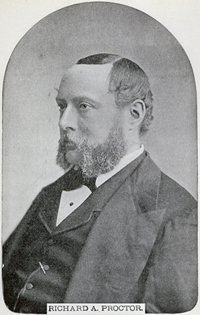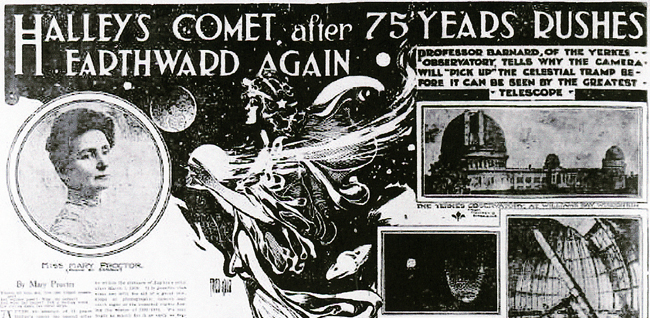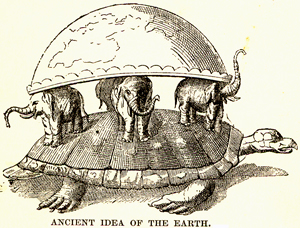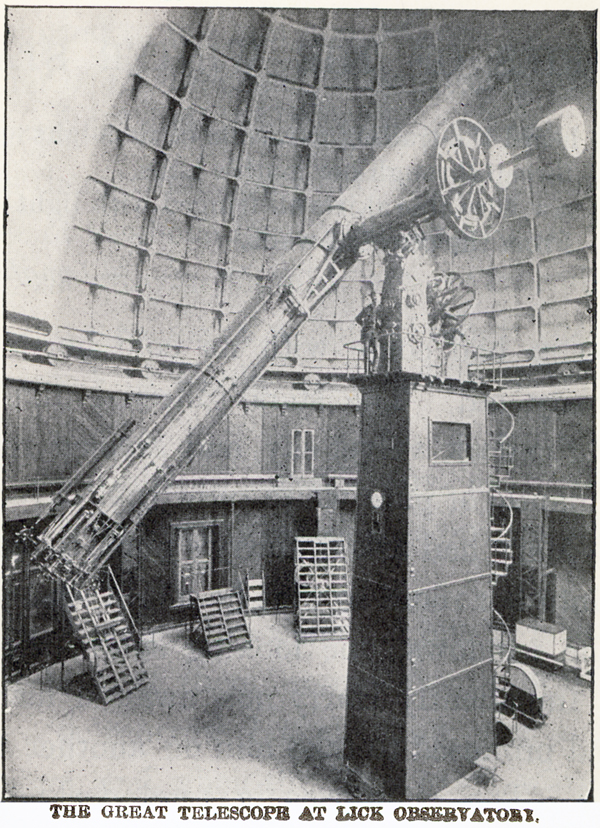Mary Proctor
Today, Mary Proctor and the stars. The University of Houston's College of Engineering presents this series about the machines that make our civilization run, and the people whose ingenuity created them.
I have an odd little children's book from 1898, Stories of Starland, by Mary Proctor. The face on the frontispiece \ is not hers, but that of one Richard Proctor. So I'll begin with him.
 Richard Proctor was born in London in 1834 and educated at Cambridge. He married while he was still an undergraduate, and went on to study law. But then, his first son died and he was distraught. He buried himself in the study of astronomy.
Richard Proctor was born in London in 1834 and educated at Cambridge. He married while he was still an undergraduate, and went on to study law. But then, his first son died and he was distraught. He buried himself in the study of astronomy.
He did well at it. He created the first real map of Mars. It's been superseded, but a Mars crater is named after him. He also measured the length of a Mars day as 27 hours, 37 minutes, and 22.7 seconds -- accurate within a tenth of a second. The Royal Society made him a Fellow for his extensive work.
But, while he was still very young, a bank failure left him penniless and he needed to earn a living. He did some teaching but didn't like it. What to do? He found that, in addition to serious science writing, he could also write popular astronomy. And he proved to be a runaway success. His first popular book, Other Worlds Than Ours, explored the possibility that we are not alone in the universe, and it stayed in print for decades.
His daughter Mary, born when he was 28, grew up in the trade. She arranged his library and proofread for him. During a trip to the US, she enrolled in Columbia University. She graduated the same year he died; then spent time lecturing in California. She lived to 96 and the last five of her 16 books came out in my lifetime.

Her first, Stories of Starland, is my window into Mary Proctor's mind. In it, a girl (also named Mary) has a younger brother, Harry, who's terminally ill. So she sits with him and tells him about planets and stars. She also tells the legends surrounding the heavens. Here's a drawing of the old Hindu idea that a flat Earth rides upon huge elephants standing upon a great tortoise.
But she tightens the story as she goes, always engaging this young boy. She explains the roundness of earth, its movement about the sun. She describes the nature of the moon, and shows her own drawing of Earth-rise in a black sky above its cratered surface.

We read about comets and meteors. Then stars: She interweaves legends of the
zodiac with findings of the newest telescopes. You catch the wonderful mood of the book when she tells Harry about the structure of stars and quotes this rhyme:
Twinkle, twinkle, little star,
Now we find out what you are,
When into the midnight sky
We the spectroscope applies.
Today, another Proctor Crater, this one on the moon, is named after Mary. And justly so. For her writings shaped a generation. "Our little universe is like an island in space," she tells Harry as he falls asleep -- smiling in his dreams of stars, spectrographs, and views of Earth that would not be photographed for another 71 years.
I'm John Lienhard at the University of Houston, where we're interested in the way inventive minds work.
M. Proctor, Stories of Starland. (New York: Silver, Burdett & Co., 1898). Thanks to Andrew Lienhard for this edition. All images, except the San Francisco newspaper heading, are from this source
See also the Wikipedia articles on Mary Proctor and Richard Proctor.

